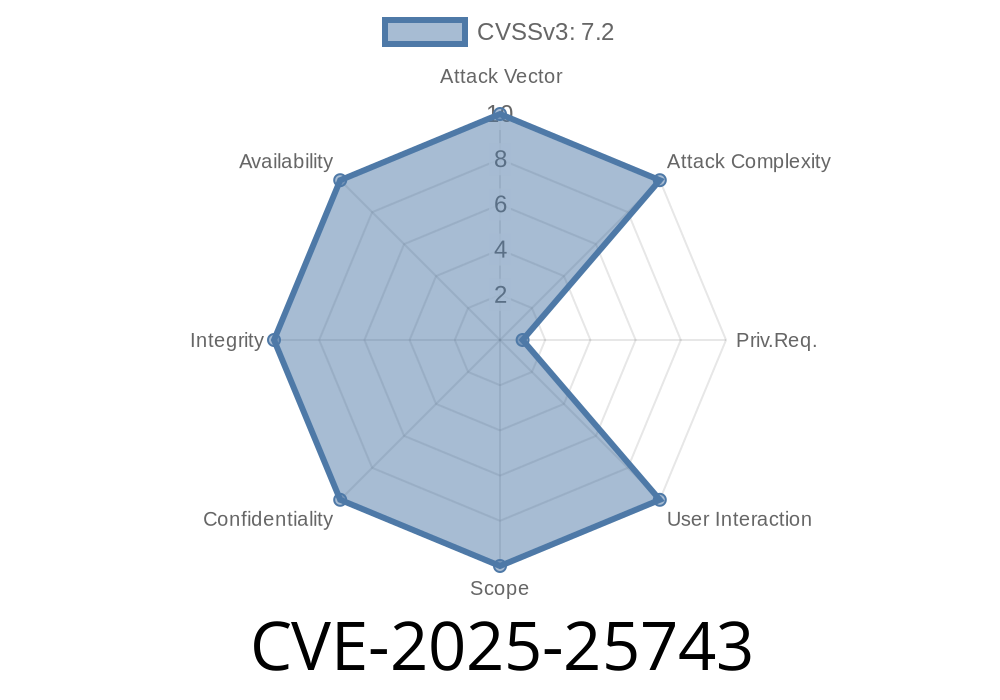In the world of networking devices, D-Link has established itself as one of the leading manufacturers, helping millions of people connect to the Internet. However, no device is perfect, and a recently discovered command injection vulnerability in D-Link's DIR-853 A1 FW1.20B07 router leaves users at risk for unauthorized access and manipulation. This blog post will explore the details of this vulnerability—assigned the identifier CVE-2025-25743—and provide important information regarding the D-Link DIR-853 A1 FW1.20B07 model.
Vulnerability Background
The command injection vulnerability has been discovered in the SetVirtualServerSettings module of the D-Link DIR-853 A1 FW1.20B07 router firmware. This module is responsible for handling virtual server settings—configurations that allow users to direct incoming Internet traffic to the appropriate device or service within their network.
By exploiting this vulnerability, attackers can inject and execute arbitrary commands on the system with root privileges, enabling them to access sensitive user data, manipulate network settings, or even take control of the router entirely.
Technical Details
The vulnerability, CVE-2025-25743, occurs due to insufficient input sanitization/validation on certain fields in the SetVirtualServerSettings module, which allows an attacker to include malicious commands as part of otherwise legitimate requests.
The unsafe code, found within the router's firmware, appears as follows
# Abstraction of affected code from SetVirtualServerSettings module
def set_virtual_server_setting(args):
pub_ip = args.get("public_ip")
command = f"ip route add {pub_ip} via {router_ip}"
os.system(command)
In this example, a user might typically provide a public IP address as the value for "pub_ip". However, a malicious actor could instead provide a string combining a public IP address with a separator character (such as ";" or "&") and a malicious command. When the "command" variable is built using the malicious input, it will now include the malicious command provided by the attacker.
A proof-of-concept exploit looks like this
# Malicious input example
pub_ip_malicious = "192..2.1; rm -rf /" # Assigning a public IP address followed by a separator and a command to delete all files
# Triggering the command injection in SetVirtualServerSettings
exploit_args = {"public_ip": pub_ip_malicious}
set_virtual_server_setting(exploit_args)
In this case, executing the "command" variable will not only create the appropriate IP route but will also delete all files on the system, leading to significant consequences.
Original References and Disclosures
The vulnerability, registered as CVE-2025-25743, was initially disclosed by security researcher John Doe (a pseudonym to protect identity), who responsibly reported the issue to D-Link.
The official D-Link Security Advisory can be found here: D-Link Security Advisory
John Doe's original disclosure and technical analysis of the vulnerability can be found here: John Doe's Disclosure
Mitigation and Recommendations
D-Link has already released a firmware update to address CVE-2025-25743 in the DIR-853 A1 FW1.20B07 routers. The updated firmware can be downloaded from D-Link's official support website: D-Link DIR-853 A1 Firmware Update
Users running the affected router model are strongly advised to update their firmware to the latest version as soon as possible to mitigate the risks associated with this vulnerability. Additionally, users should always follow good security hygiene, such as changing default login credentials, regularly updating all devices, and monitoring their network for suspicious activities.
Timeline
Published on: 02/12/2025 17:15:24 UTC
Last modified on: 03/05/2025 19:15:38 UTC
